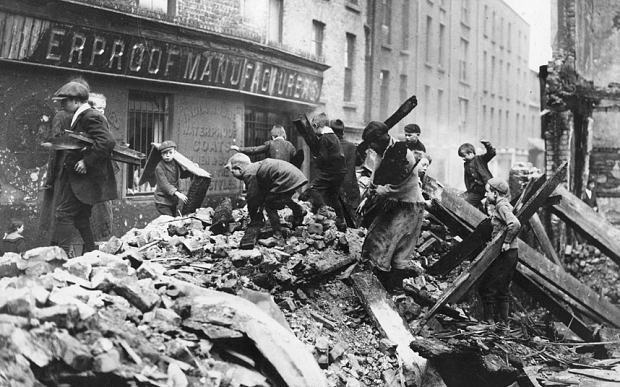Here in Dublin, Ireland is busy marking 100 years since the Easter Rising of 1916. It is being celebrated, but with far less chest-beating and bombast than met the 50th anniversary in 1966. And this is a good thing entirely.
The Rising lasted for six days. Its leaders seized key buildings around Dublin and proclaimed an Irish Republic. It started a series of events that led to an independent Irish state in the south, but also to the partition of Ireland and a bloody civil war which claimed between two and three thousand lives.
Emblematic of this year’s commemoration was an event on Good Friday, at a Unitarian church on St Stephen’s Green. The names of all the dead of the Easter Rising were read out: 70 rebels, but also 116 British soldiers, 30 policemen, and 40 children under 17. Between 488 and 550 altogether. Another notable event was a play performed by students in a national school in Balbriggan, where 85 percent of the pupils have immigrant parents. Many of these arrived in Ireland fleeing armed political conflict.
Modern Ireland is on display in all this. Nowhere more so than on Twitter, where @CenturyIRL is live-tweeting the events of a hundred years ago, as they unfolded back then. The official national commemoration—with an expert advisory group set up five years ago by Ireland’s Taoiseach (or Prime Minister)— chose a theme which reflected on the last hundred years, and re-imagined the future. This was a wise decision. It hoped to bring together all the different traditions on the island of Ireland, including those of Northern Irish Protestants.
The story that results is less black-and-white than you would have got in 1966—not a matter of good versus evil, with the virtuous Irish chasing out the dastardly Brits. Looking back to 1966, grainy television reels depict a military parade conjuring up the worst of banana republics, with President Éamon de Valera dressed in a stuffy top hat, and Dublin’s Archbishop John McQuaid omnipresent.
Perhaps this was because viewed from 1966, the fulsome tones of 1916’s Easter Proclamation – which declared Ireland’s independence from the UK – did not seem entirely matched by the record of the Irish state, with its failings to resuscitate the Irish language, and inability to reunite the whole island.
From 1957 to 1973 Ireland looked like a one-party state, with a population which emigration had trimmed down to 2.8 million, the lowest in two centuries. The post-war boom had largely passed Ireland by—and 90 percent of this predominantly agricultural nation’s exports went to Britain. Independence hadn’t quite worked out for Ireland, and hence the chest-thumping. Think North Korea. With priests.
It wasn’t quite the country Pádraig Pearse and the other Easter Rising participants had dreamed of—or for that matter, anyone else. Its leaders were acutely aware of this. A more confident country might have shown less bombast.
In 1966, the key event was the opening of a Garden of Remembrance dedicated to martyrs who had died in the pursuit of Irish independence, by President de Valera and Archbishop McQuaid. When Anglican Archbishop Dr George Simms and the Presbyterian Rev’d William McDowell came to attend the opening, rather embarrassingly, they were locked out.
As 2016’s themes of reflection and re-imagination show, it is a different Ireland that, in some respects, turns 100 this weekend. It has become more at peace with itself, its neighbour, and increasingly also, its past. This is something worth celebrating.






Comments